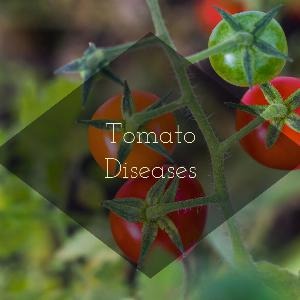Most tomato problems are caused by insufficient or uneven watering, but occasionally diseases will strike. If the leaves on the tomato wilt and turn yellow, or even brown, the plant seems stunted, and little or no fruit is produced, it may be more than lack of water. If there is brown tissue just under the bark, your tomato may be suffering from fusarium wilt or verticillium wilt. Both are serious fungal diseases that are spread by contaminated plants, soil, and equipment. No available chemicals or treatments will reverse or slow the disease. Get rid of infected plants, including roots, to help prevent further spread. The best prevention is to rotate your tomato spot, and plant tomatoes that are resistant to the wilt diseases. The tag will tell you if it is resistant. Don’t plant tomatoes, peppers, eggplant, or potatoes anywhere near where the infected plants grew, as the fungus will remain in the soil for five years or more. A black spot on the blossom end of the tomato is caused by a lack of calcium, brought on by insufficient water, sprinkling instead of irrigating, fertilizer that is too high in nitrogen, or using fresh manure to fertilize. Treat blossom end rot with Ferti-lome Yield Booster, which is a calcium treatment. DX is the only tomato resistant to blossom end rot. Plants that stay very small and turn a little yellow may be suffering from a lack of nitrogen, especially if the weather has been wet, or there has been heavy irrigation for a long time. Let the plants dry out a little and use 16-16-16. Too much water, or poorly drained soil, can also cause the leaves to roll up and will significantly cut down on production. A tomato with a tightly curled top may be suffering from Curly Top, a viral disease spread by insects. Once the plant is infected, there is no remedy but to destroy the plant to help prevent the spread of the disease. Sometimes, a tightly curled top can be caused by a weed killer being applied somewhere in the area, as tomato plants are very sensitive to this. If you are spraying insecticides, be sure your sprayer has never been used for weed killers. Even minute amounts of the weed killer can affect the tomato plant.




